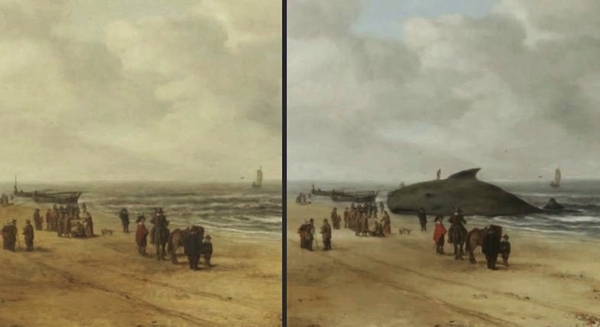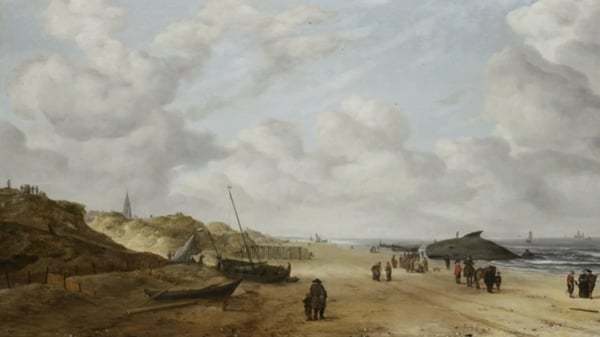Art World
Conservation Uncovers Beached Whale in 17th Century Dutch Landscape Painting


Benjamin Sutton


Hendrick van Anthonissen, View of Scheveningen Sands (circa 1641).
Courtesy the Fitzwilliam Museum.
It’s not unusual for conservationists to discover new details in Old Master paintings, but a whole whale? That’s what turned up in Hendrick van Anthonissen‘s 17th-century seascape painting View of Scheveningen Sands when Cambridge student Shan Kuang took to the circa-1641 composition at the Hamilton Kerr Institute. The painting, which belongs to the Fitzwilliam Museum, formerly showed crowds strolling along the beach near The Hague, but for the longest time nobody could figure out why such a large group of people had gathered at the water’s edge.
“It seemed a very unassuming painting depicting a very calm beach scene set in winter,” Kuang tells Live Science in a short video. “There were clusters of people gathered, and I was unclear why they were there, but it didn’t seem too abnormal.”

Detail of Hendrick van Anthonissen, View of Scheveningen Sands (circa 1641) before and after conservation.
Courtesy the Fitzwilliam Museum.
But, as she began to remove the varnish from the painting’s surface, a floating figure turned up hovering on the horizon line. Next, a fin came into view. “It was at that point that we knew that there was something more going on,” says Kuang.
Removing more paint eventually revealed an entire beached whale, whose looming, dark figure radically changes the composition, immediately drawing viewers’ eyes. What had formerly been a quiet, chilly waterfront vista suddenly became a dramatic beach scene.
“Over the centuries the attitude towards painting has changed,” Kuang notes. “In the past it would be very common to cut a painting or to paint over it to fit aesthetic purposes. They were seen as mere decorations. Nowadays, with this painting in a gallery setting, we respect what the original painter intended.”
View of Scheveningen Sands is back on view, whale and all, in the Fitzwilliam Museum’s Dutch Golden Age paintings gallery.